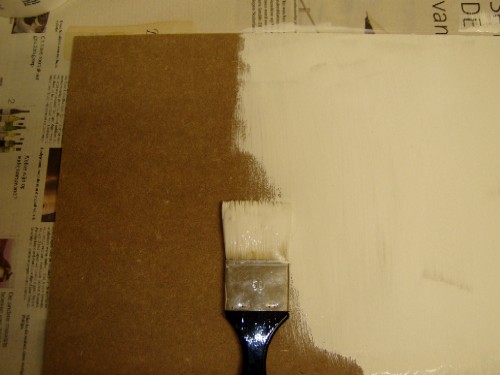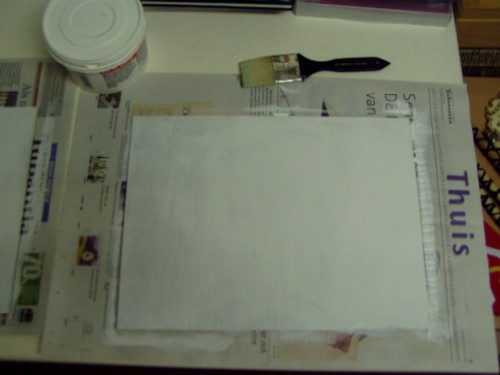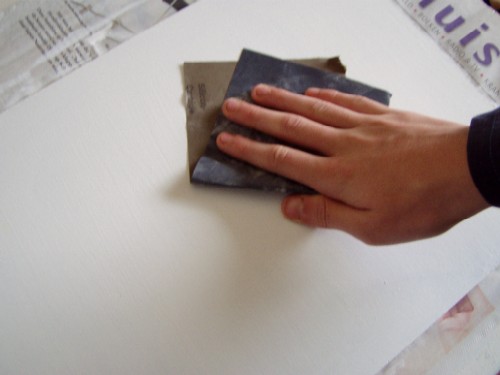| It's best to have the boards cut into standard sizes, such as 20x30 or 40x50. This way, it will be cheaper to frame your artwork later on. Preferably, choose boards that are "hard-pressed" with a minimum thickness of 4mm. This prevents warping. Although the edges don't crumble, there may still be small irregularities at the edges. |
Sand the edges first with fine sandpaper to make them nice and smooth. Also, lightly go over both sides. Your board is now ready to be primed with Gesso.
|
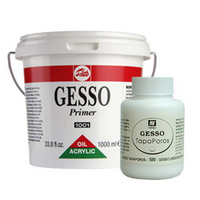 Gesso ensures that the paint does not seep into the board and provides a nice, well-adhering surface. Place a newspaper under the board before treating it with Gesso. Choose a universal Gesso or one suitable for the type of paint you'll be using. This is often oil paint, but you can also paint on MDF boards with acrylic paint, for example. Gesso ensures that the paint does not seep into the board and provides a nice, well-adhering surface. Place a newspaper under the board before treating it with Gesso. Choose a universal Gesso or one suitable for the type of paint you'll be using. This is often oil paint, but you can also paint on MDF boards with acrylic paint, for example. |
| Depending on how smooth you want your surface to be, you can use a roller or a brush to apply the gesso. A roller will give a smoother layer. If the gesso is very thick, you can thin it slightly with water. Here, I'm using a wide flat brush. |
| Apply the gesso evenly. Allow the layer to dry thoroughly. Multiple layers need to be applied. Generally, it is advised to apply a layer of gesso to both sides of the panel. This is particularly important for larger dimensions to prevent warping. Optionally, you can give the gesso a base color with acrylic paint. Simply mix the paint into the gesso. Apply a minimum of three layers in total. Allow them to dry well in between. |
| Once the panel is well covered, you can use fine sandpaper to sand it smooth. You can then use the panel for fine painting techniques. If you want to experiment, it's also possible to mix some kind of texture into the final layer of gesso. For example, wood chips or something similar. This way, you'll get a very rough surface. |
| Once the gesso is completely dry, you can start painting right away. Keep in mind that any additions to the gesso, such as wood chips, may extend the drying time. |



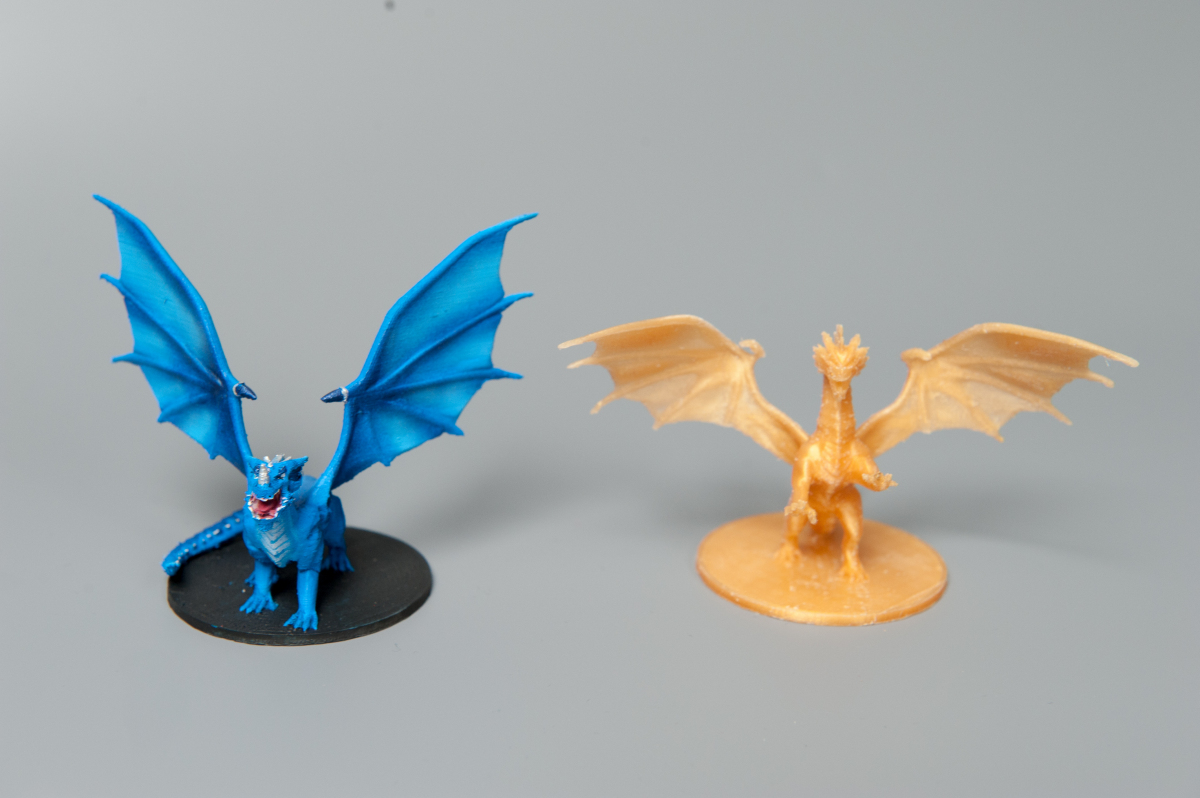
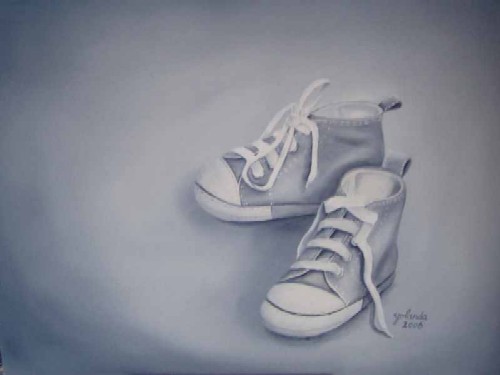
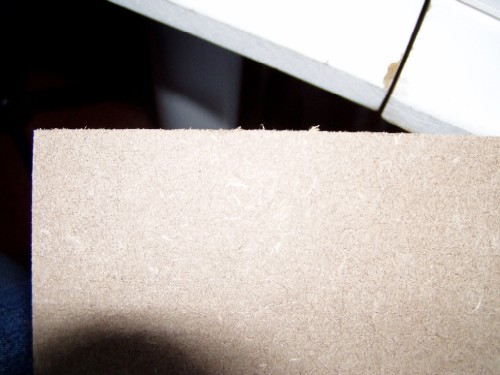
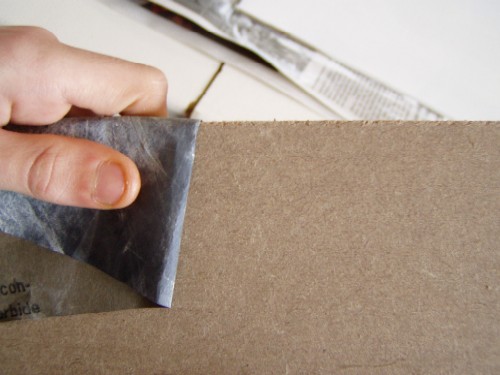
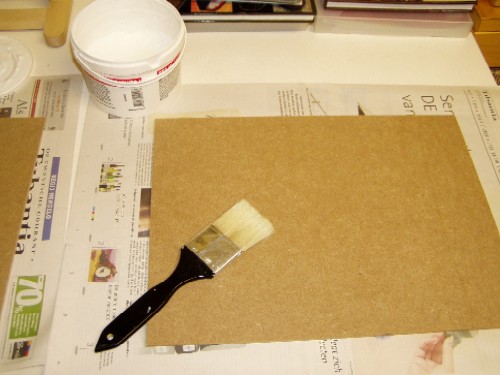
 Gesso ensures that the paint does not seep into the board and provides a nice, well-adhering surface. Place a newspaper under the board before treating it with Gesso. Choose a universal Gesso or one suitable for the type of paint you'll be using. This is often oil paint, but you can also paint on MDF boards with acrylic paint, for example.
Gesso ensures that the paint does not seep into the board and provides a nice, well-adhering surface. Place a newspaper under the board before treating it with Gesso. Choose a universal Gesso or one suitable for the type of paint you'll be using. This is often oil paint, but you can also paint on MDF boards with acrylic paint, for example.